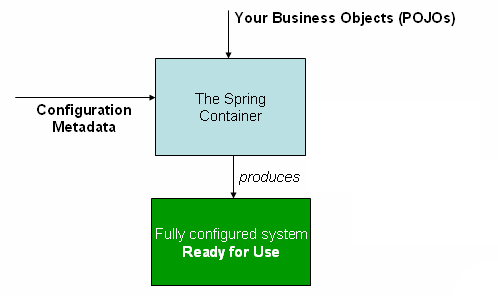The Inversion of Control (IoC) principle in the Spring Framework, also known as dependency injection (DI), is a fundamental design pattern that facilitates loose coupling and enhances modularity and testability in software applications.
IoC in Spring inverts the flow of control compared to traditional programming. Instead of objects creating or finding their dependencies, these are supplied externally, typically by a framework or container.
The IoC container in Spring manages object creation, configuration, and assembly. This container:
- Reads configuration metadata from XML, Java annotations, or Java code.
- Defines how beans (objects) are created, their lifecycle, dependencies, and other properties.
- Supports various scopes for bean instances, like singleton and prototype.
- Allows for easy integration with other Spring features, enhancing modularity.
- Decoupling: Reduces the coupling between classes, making the system more flexible and maintainable.
- Testability: Simplifies testing by allowing for easy mock implementations of dependencies.
- Modularity: Promotes a clear separation of concerns, leading to more organized and modular code.
Imagine a simple web application with the following components:
- Controller: Manages user requests.
- Service: Contains business logic.
- repository: Handles data access.
In a traditional application setup, each component might explicitly create instances of its dependencies. However, with Spring IoC, these dependencies are injected by the container.
- The Controller class declares a dependency on the Service class.
- The Service class declares a dependency on the Repository class.
- When the application starts, the Spring IoC container creates instances of these classes.
- It then injects the Service instance into the Controller, and the Repository instance into the Service.
This setup leads to a design where the Controller doesn't need to know how to create a Service, nor does the Service need to know how to create a Repository. The IoC container handles these responsibilities, leading to more modular, testable, and maintainable code.
public class MyController {
private MyService myService;
// Constructor injection
@Autowired
public MyController(MyService myService) {
this.myService = myService;
}
public void doSomething() {
System.out.println(myService.serve());
}
}public class MyService {
public String serve() {
return "Service Method Called";
}
}You can define beans and their dependencies in an XML configuration file or via Java-based configuration:
<beans xmlns="http://www.springframework.org/schema/beans">
<bean id="myService" class="com.example.MyService"/>
<bean id="myController" class="com.example.MyController">
<constructor-arg ref="myService"/>
</bean>
</beans>@Configuration
public class AppConfig {
@Bean
public MyService myService() {
return new MyService();
}
@Bean
public MyController myController() {
return new MyController(myService());
}
}When the application runs, Spring's IoC container automatically creates and injects the MyService bean into the MyController bean. You can then call methods on MyController, and it will use MyService as configured.
This code demonstrates how Spring manages object creation and dependency injection, abstracting away the boilerplate code needed to instantiate and manage dependencies manually.
Spring's IoC container is a powerful tool that aids in managing complex dependencies in modern applications. It exemplifies the Spring philosophy of managing application infrastructure so developers can focus on business logic.
